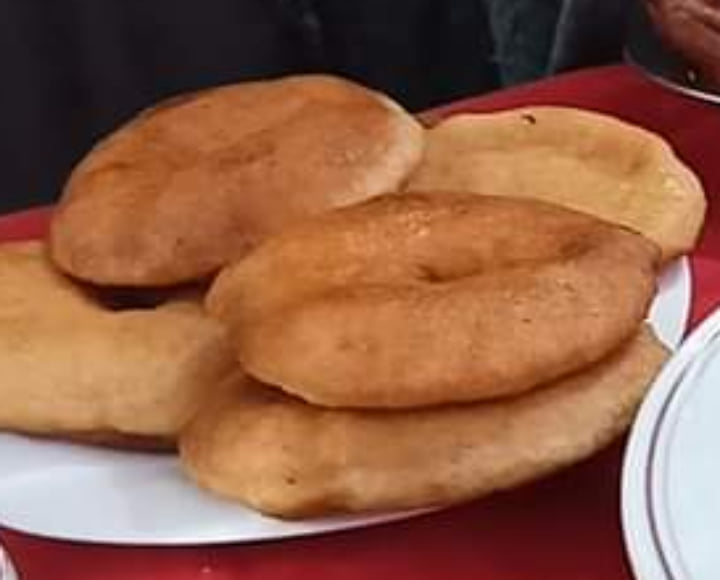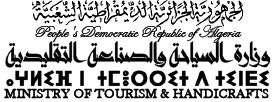The city of Guelma has a great extent of richness on the level of traditional crafts that are inherited through generations. Nowadays, it has a very fresh lies and some of them are on the way to vanish ( pottery production, textile production especially the Guelmi Zarbia), however, many of such productions still have their own status encompassing:
Traditional clothing
Guelma is known by traditional clothing, which is identified by embroideries on fabrics, especially on velor, it has an artistic and aesthetic touch using the golden fiber “Fatlah” and “Majboud” that is made by the Guelmi woman such as the Guandoura, the karakou…etc. This craft is practiced at home or in the workshops.


Traditional Jewelry
The traditional jewelry production is widely spread at the level of Guelma city, it is practiced by a large number of craftsmen. This craft relies on gold and silver in different forms, represented in: The Maqias, the golden belt, the anklets, the Skhab, the earrings.


Traditional Pottery
The traditional pottery is a mountainous and rural product that carries within it its authentic geographical features.
It is the most popular activity among rural women. The Guelmi pottery is a mixture of simplicity and solidity, and it is for home use. Its geometric patterns are numerous, including: cylindrical, rhombic, triangular, … etc. Its colors are of plant and earth origins. It is practiced in several municipalities of the city.


Traditional Sweets
The most famous traditional sweets in the city of Guelma, we find the following:
Al-Makrood: prepared mainly from coarse and dates fruit, flour, butter, orange blossom water and cloves, as it is cooked in the oven.
* Baklawa: prepared from flour and butter and stuffed with walnuts, ground almonds, butter, sugar, cloves and honey, and decorated with almond kernels.
* Guarn al-Ghazal: We find the same ingredients that are used in the preparation of baklawa with the omission of honey and a difference in shape and garnish, as fine sugar is used in the decorating process.
gariwesh: Prepared with flour, butter and a little salt, in the form of a braid, fried in oil, then placed in honey and garnished with sesame seeds.


Traditional zarbia and rugs
The Guelmi Zarbia (Carpet) has preserved its original shape and style, it is made in a center specialized in the production of Zarbia (carpets) “CASSAP” embroidery, as it is a fine woolen fabric.
Its decoration is inspired by the Roman mosaic found in the Roman theater, located in the capital of the city, which is called the “Torsad” carpet, and there are other models of carpets made in such center, which are square mosaics, crochet mosaics, and tulips.
Traditional embroidery
The traditional embroidery is one of the deep-rooted activities in Guelma, and they are made on fabrics and velour by placing various shapes and drawings using silk and linen, and they are used to decorate various home furniture such as bed sets and table sets, and among the kinds of embroidery on the fabric (Calculation and Nabal embroidery).
Pâte traditionnelle
Couscous : deux types de couscous, le Bomeghlouth préparé à partir de semoule d’orge, et le l’ordinaire, qui est très connu, préparé à partir de semoule de blé dur. Les deux types sont cuits de la même manière.
Trida : Préparé à partir de semoule de blé dur, sous forme de fines feuilles de pâte, découpée sous forme de carrés et arrosée avec le bouillon préparé.
El-Chakhchoukha : Se prépare de galette (Kesra) de semoule, coupée en tous petits morceaux et que l’on fait sécher, pour être ensuite cuite à la vapeur.
El-Naama ou EL-Ftir : C’est une pâte préparée à partir de semoule de blé dur, se sont des boules de pate étalées finement, puis de feuilles très fines serons cuites à blanc sur tôles spéciales Ftir, pour être ensuite cuite à la vapeur, et servie avec bouillon préparé.
El-Ghraif (Baghrir) : Il se fait avec de semoule de blé, de l’eau, du sel, du sucre vanillé et de levure pour qu’elle s’active, on fait mélanger et mixez, c’est une sorte de crêpes avec de centaines de trous, ce qui vaut à ces crêpes leur nom «les crêpes à mille trous», ça rend El-Ghraif très léger, puis déposez une louche de pâte sur une poêle bien chaude légerment beurrée. Il est servi avec du beurre et sucré avec du miel.
Kesra Matloo : C’est un mélange de semoule, de sel, de levure de boulanger et d’huile qui constituent la pâte de forme circulaire, qui se cuit dans un tajine en poterie.
Kesra Maadjouna : les mêmes ingrédients que Matloo, sauf qu’elle nécessite l’ajout d’huile en plus grande proportion.


